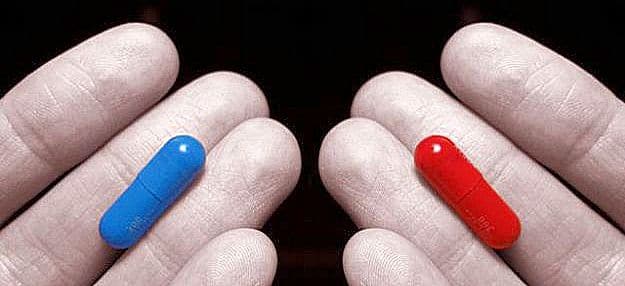Stretti tra medici, farmacisti, informatori scientifici (quelli che saltano la fila in ambulatorio…) e case farmaceutiche, cosa dobbiamo sapere per scegliere con consapevolezza come curarci? Sono convenienti e Almost always the same as those with the patent, yet we consume less than in other countries
di Cinzia Lucchelli – 06 febbraio 2015 – GAZZETTA DI MANTOVA
Questo nonostante gli equivalenti costino almeno il 20% in meno e nonostante i medicinali disponibili in Italia siano gli stessi prescritti in Europa (sono prodotti da multinazionali). Da dove nascono allora ritardo e diffidenza? E soprattutto, stretti tra medici, farmacisti, informatori scientifici (quelli che saltano la fila in ambulatorio…) e case farmaceutiche, cosa dobbiamo sapere per scegliere con consapevolezza come curarci?
Different prices. The same formulas, therefore, but different prices. This is because when a company develops a drug, it protects it, in the European Union, with a 20-year patent. Period during which it can sell the drug at a price that allows it to recover the investment for research and studies necessary to demonstrate efficacy and safety. Companies that copy and produce the drug as a generic when coverage has expired can lower the price because they no longer have to invest in research and studies.
The market in Italy. In 2012, according to the Osmed National Report, equivalents represented 13.4% of total expenditure (they were 9.5% in 2011). Broadly speaking, the consumption of expired patent medicines represents 62% of the consumption in the agreed assistance regime; 37.7% of the agreed net expense. Consumption increases, yet, it doesn't take off. Especially in comparison with England, France and Germany.
Generic in name only, The distrust perhaps already arises from the name. “People know them as 'generics', a term that sounds bad,” he says Silvio Garattini, director of the Mario Negri Institute in Milan – but what is generic is not the drug, but its name». Name, in fact, which is neither chemical nor fantasy. Since 2005 generics in Italy are called equivalents.
Delay due to patent. The long patent times, then, are among the causes of the delay of generics in Italy. In 1991, a Complementary Protection Certificate was introduced which extended the exclusivity of the exploitation of a molecule up to 38 years. Measure exceeded the following year by an EEC regulation which granted the extension of the patent for a maximum of five years. But meanwhile the 80% of the active ingredients on the market had obtained a longer coverage. By postponing the entry of generics and the consequent savings for the national health system.
When the doctor decides. Branded or generic? In some cases it chooses the doctor. When treating a patient for the first time, the prescription can only indicate the active ingredient and the pharmacist will have to provide the generic with the lowest cost (the State, among equivalent packs, reimburses the cheapest one and if the patient asks for a branded product pay the difference). But the doctor can also indicate the brand name of the drug. If he then adds "non-replaceable", the pharmacist can only supply the "branded" drug.
_______________________________________________________________
However, since the Osmed 2012 data are mentioned (evidently they are convenient for Dr. Häusermann), we inform you that the OsMed report 2014 and literally says: "Expired patent medicines now represent more than half (51.1%) of approved pharmaceutical expenditure, up on 2013 by +6.6%, and 70.4% of total DDDs, up on 2013 by +11.9% . The percentage spent on generic medicines (drugs based on active ingredients with expired patents, excluding those that have enjoyed patent protection) was equal to 28.8% of the total of expired patent medicines (Table 12). Overall, the top twenty patent-expired active ingredients represent approximately 50% of the consumption, in terms of DDD, of all patent-expired drugs; pantoprazole and lansoprazole, which dropped to second position in 2014, were the active ingredients with expired patents at the highest expense, with respectively 217.5 and 189.2 million euros”.
AIFA also states: For land active substances imported from non-EU countries That "they will be able to enter Italy to be used in the production of medicines for human use” underlines Isabella Marta, AIFA Raw Materials Inspection Management Unit, “only if accompanied by a certification from the competent authority of the country of production, which certifies its equivalence to the quality standard valid in Europe, or if accompanied by a GMP certificate from a European country. This measure is to protect the quality of medicines produced and marketed in Italy. Furthermore, AIFA will be able to inspect producers or importers of excipients, in case of suspected non-compliance with the expected quality requirements and, possibly, if deemed appropriate in the context of collaboration with the Ministry of Health, distributors of active substances located in the territory national or established in third countries” ( Guide to the implementation of Legislative Decree n. 17 of 19 February 2014, as regards active substances and excipients )
It should be noted that the FDA has set up a task force specifically responsible for verifying the quality of the active ingredient and the production method on site since it does not absolutely trust the certification from the competent authority of the country of production e publish “Orange Book” in which it certifies the real equivalence between generic and branded drugs.
Everyone draws the conclusions they want.
For the sake of truth.
Related news: Generic drugs, Osmed: the Italians are starting to convince
